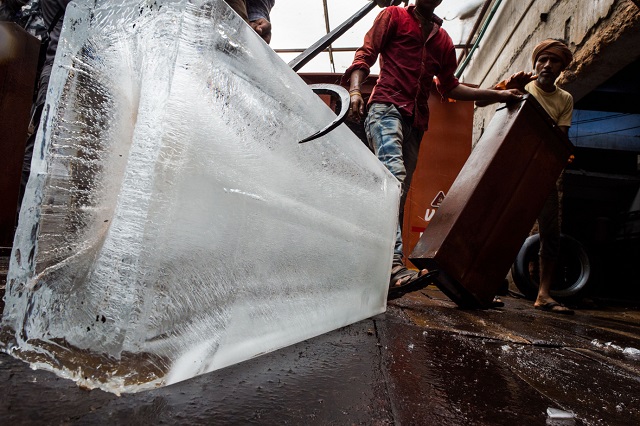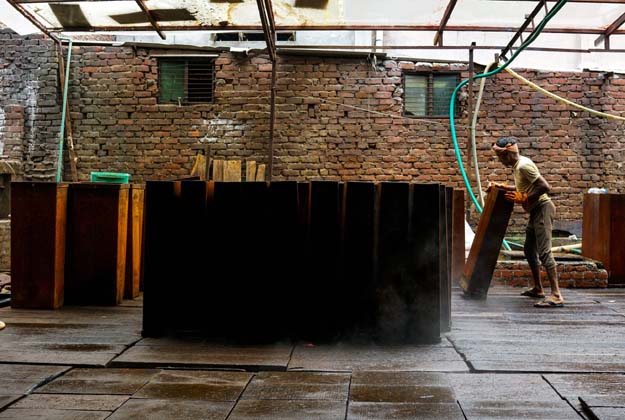
Yadav toils away alongside 50 other workers inside a dark and humid hangar in Noida just outside the city, rushing to meet booming demand from the markets and small shops serving Delhi's 20 million inhabitants.
"Some will buy 50 blocks, some will buy 10, some five, some 25", he said while taking a break from the back-breaking work. "They go everywhere, and they're sold in different quantities. We sell it to the distributors, and then the distributors sell them in pieces."
 PHOTO: AFP
PHOTO: AFPAnimals snuggle up to ice as Lahore comes to a boil
The process is anything but state-of-the-art.
Workers first fill up large rectangular containers, a bit rusty on the outside, with filtered water.
Once sealed the vessels are placed for 24 hours in large tanks filled with salt water, which has a lower freezing point than ordinary water and is chilled with ammonia.
The containers are then taken out and workers extract the ice blocks, each weighing around 50 kilogrammes (110 pounds).
"The whole capacity of the tanks is 1,100 slabs of ice. It takes 55 litres of water to fill one tank and get one slab of ice," says Babloo, the factory's manager.
 PHOTO: AFP
PHOTO: AFP"There are coils in the tanks, and the motor keeps rotating the salt water inside. The temperature has to be -12 degrees Celsius to freeze the water," Yadav explains.
Once extracted the blocks are moved and slid about with large metal tongs along the floor into the back of clients' waiting refrigerated lorries, each chunk costing ($1.90).
Otherwise the blocks go into large machines that break them up and churn out thousands upon thousands of ice cubes that are gathered into bags, sent out for delivery and scooped into the drinks of thirsty Delhiites.


1672385156-0/Andrew-Tate-(1)1672385156-0-165x106.webp)














COMMENTS
Comments are moderated and generally will be posted if they are on-topic and not abusive.
For more information, please see our Comments FAQ